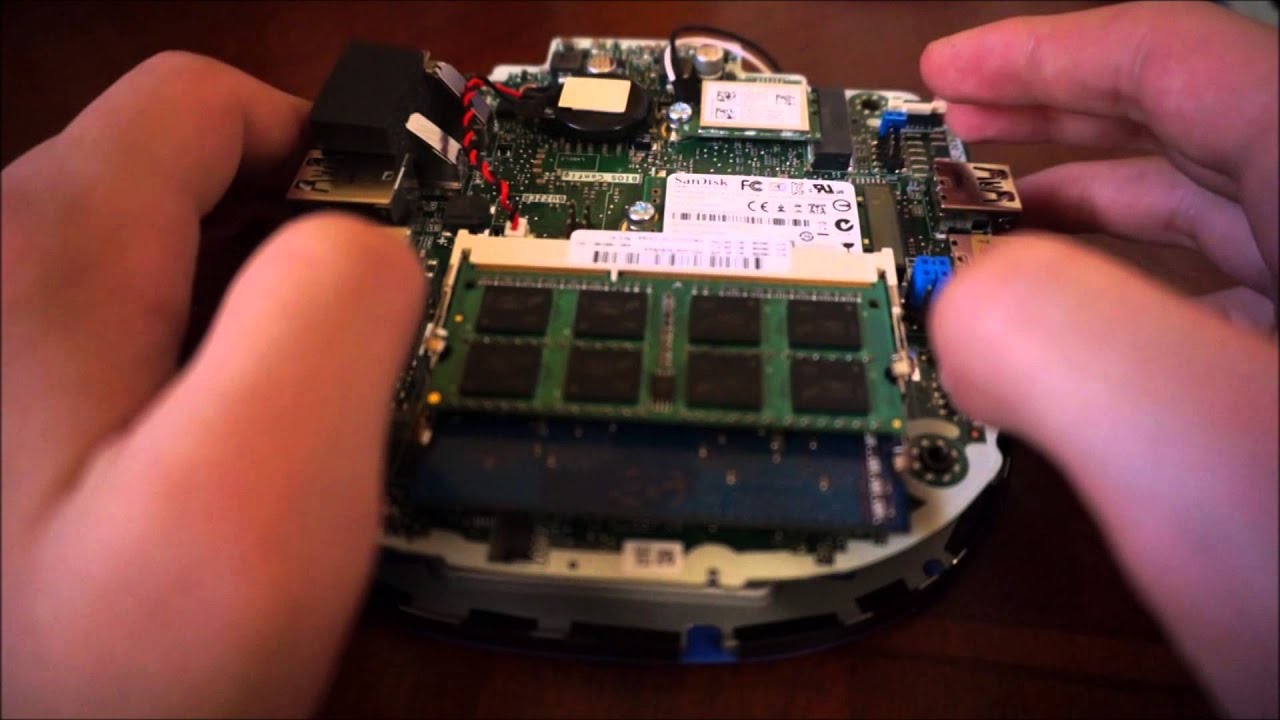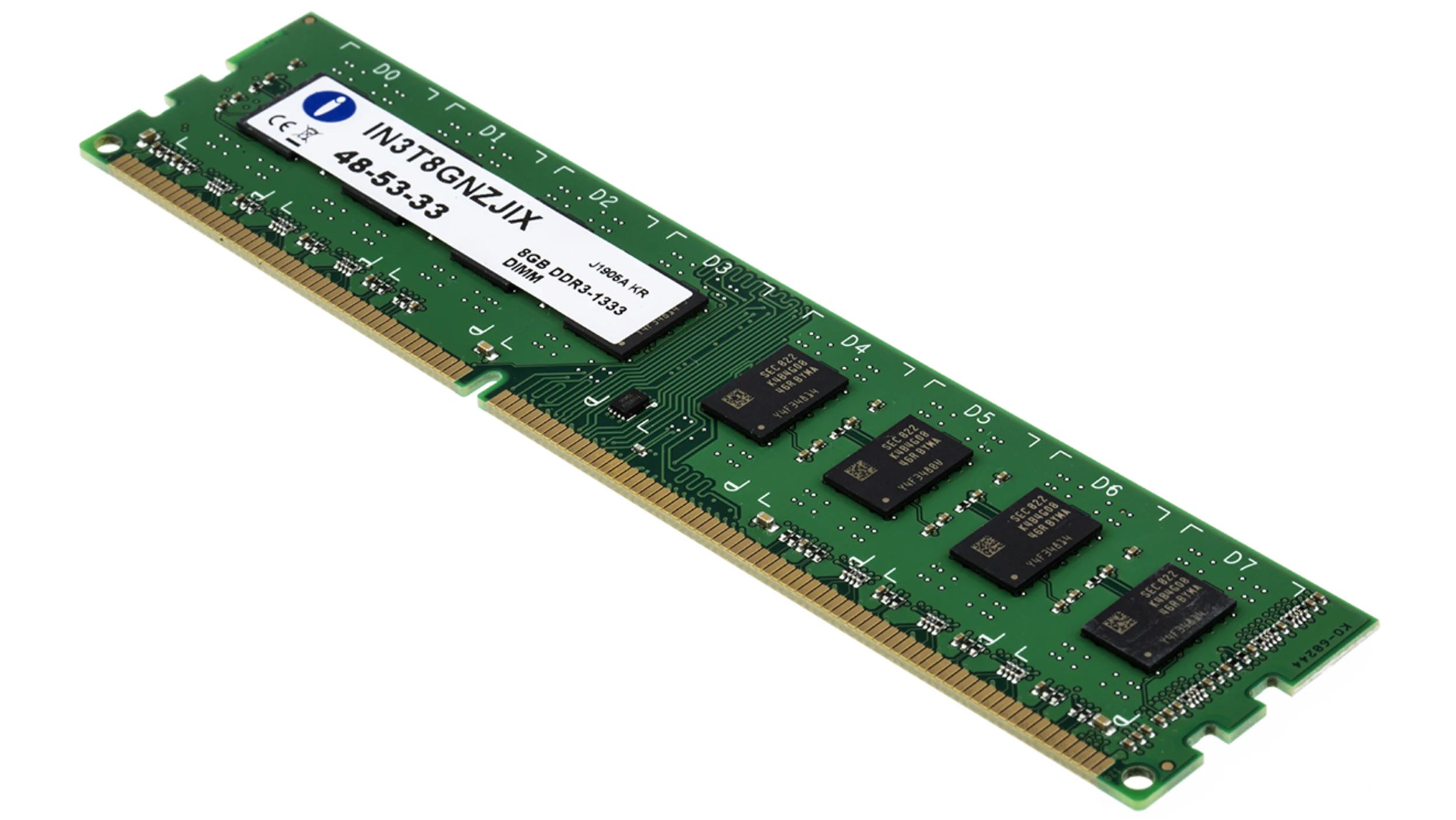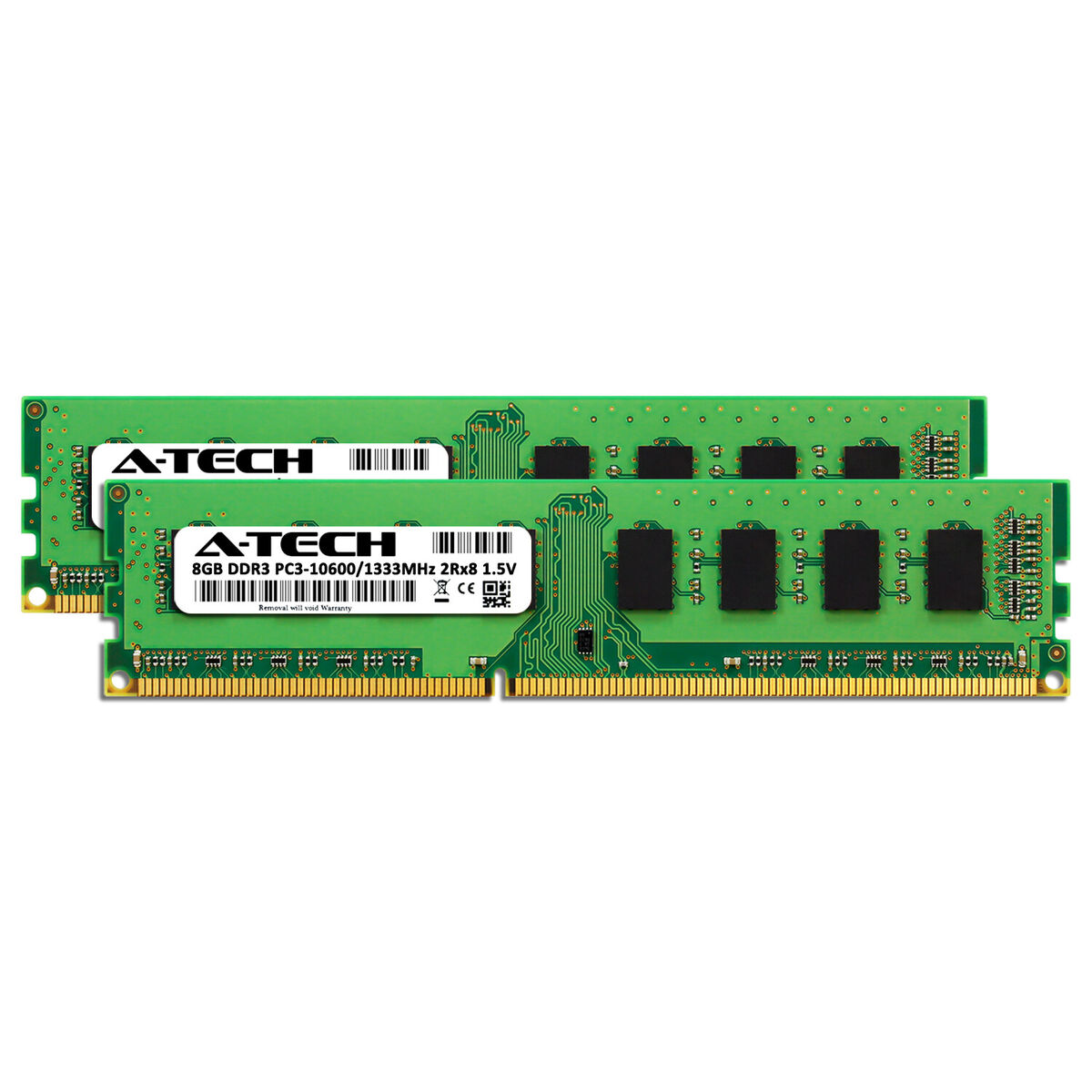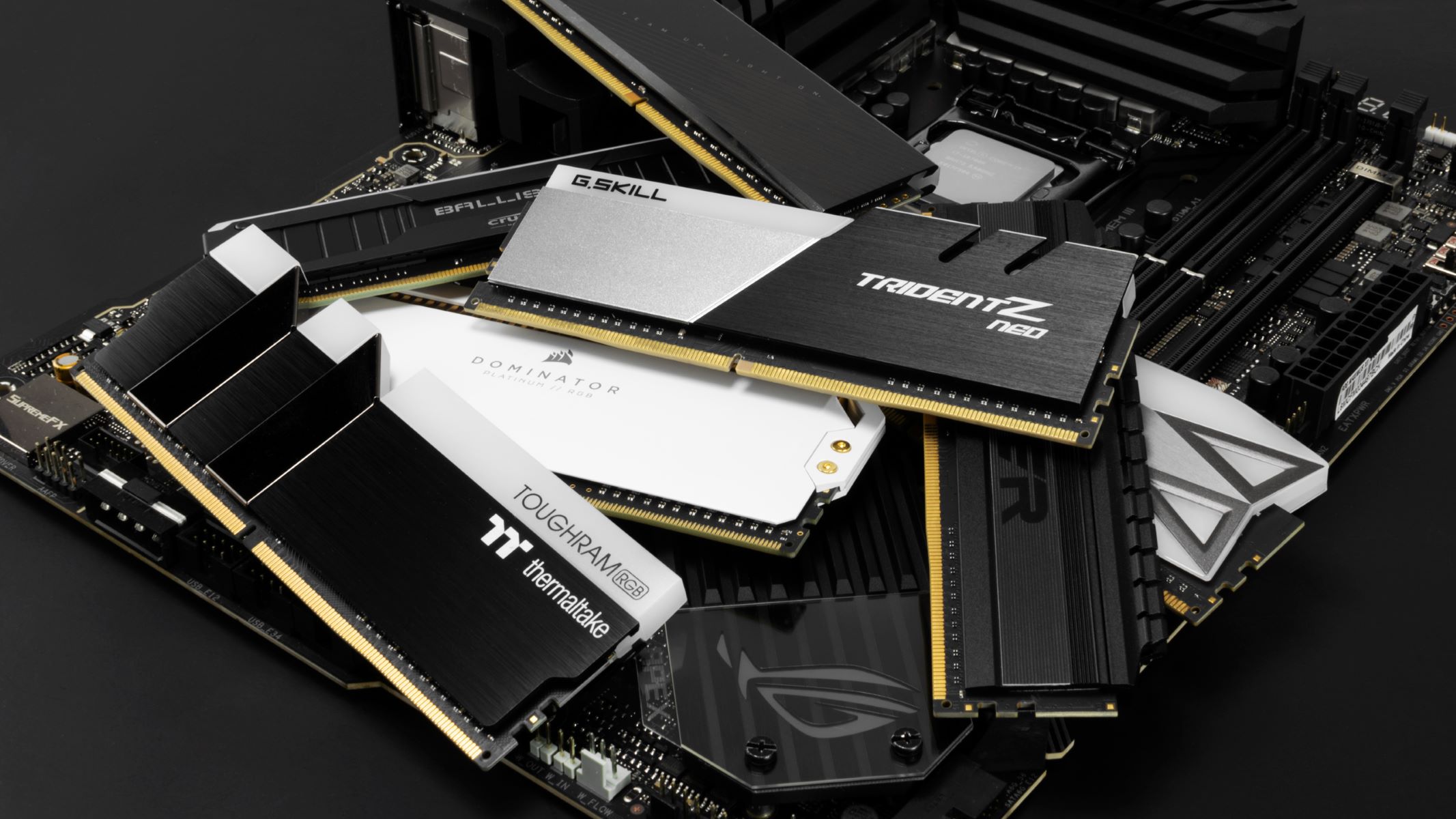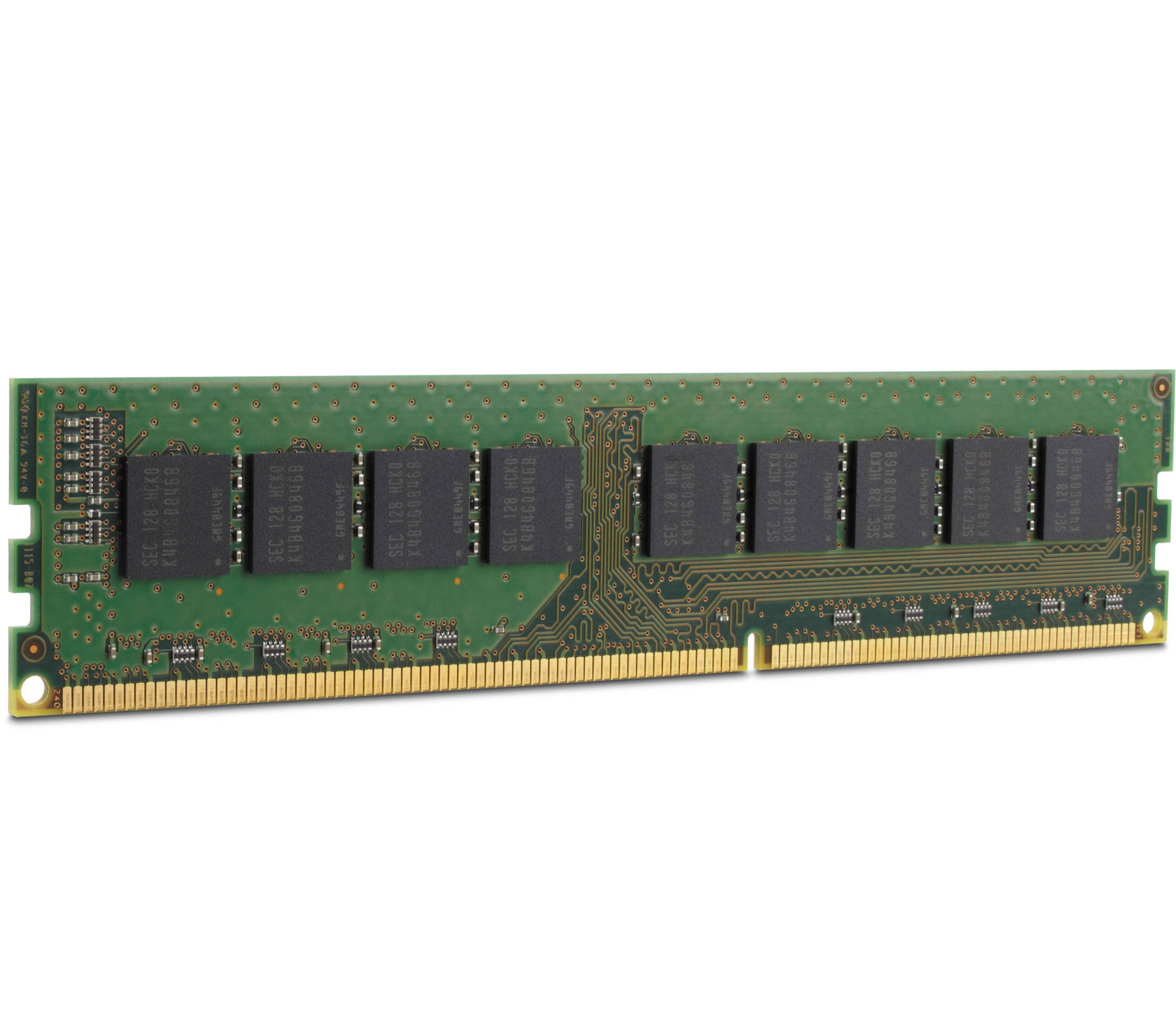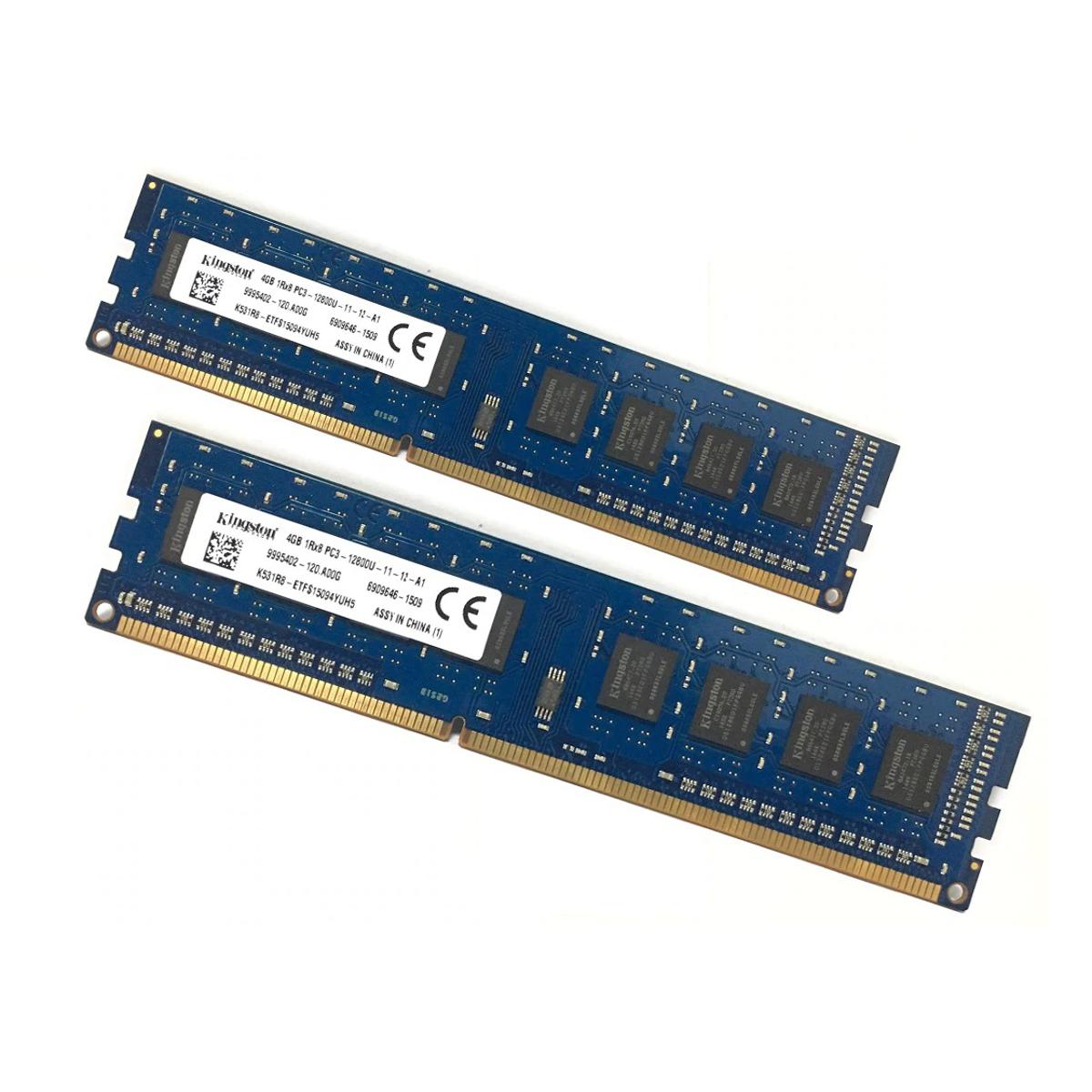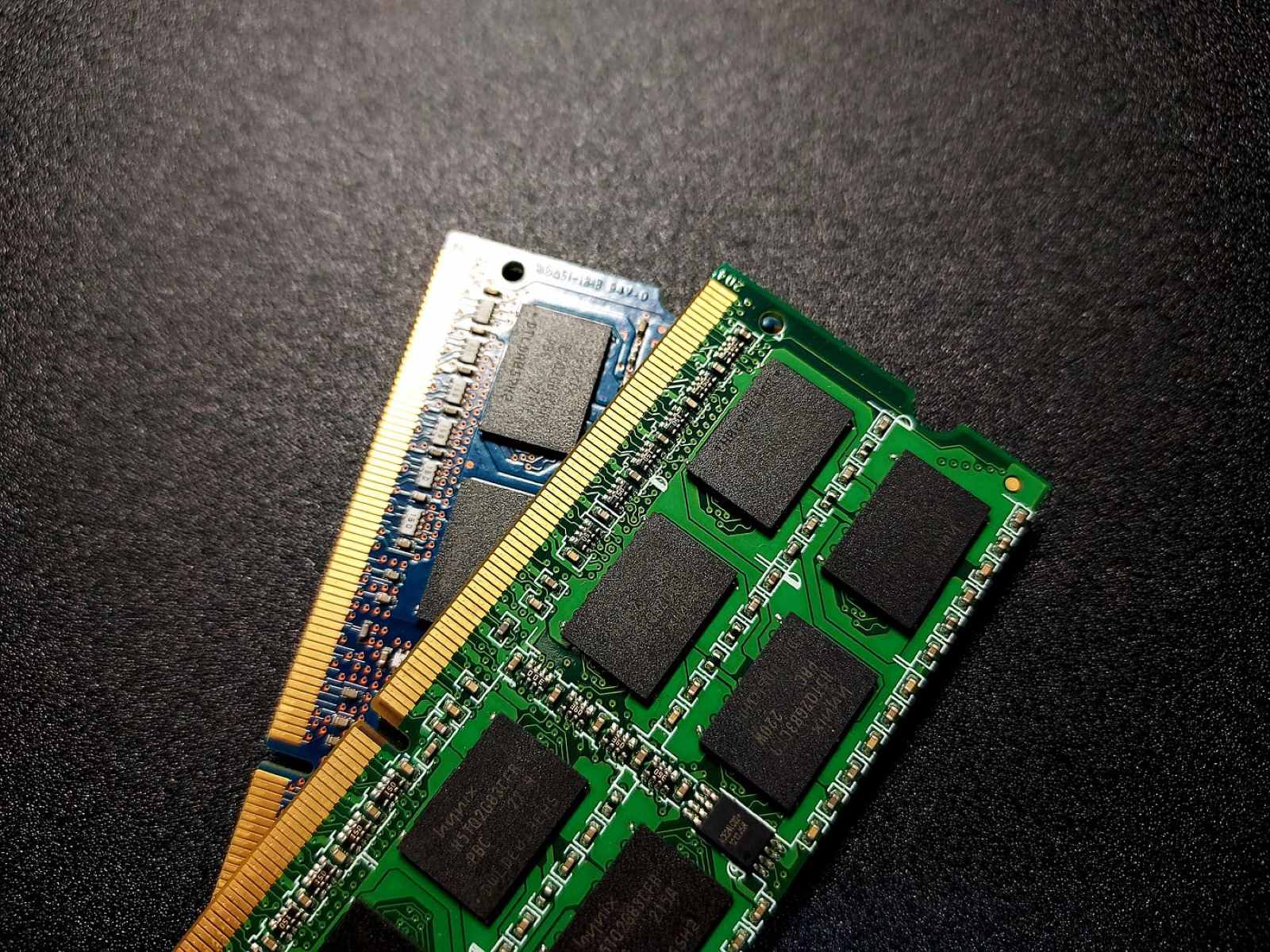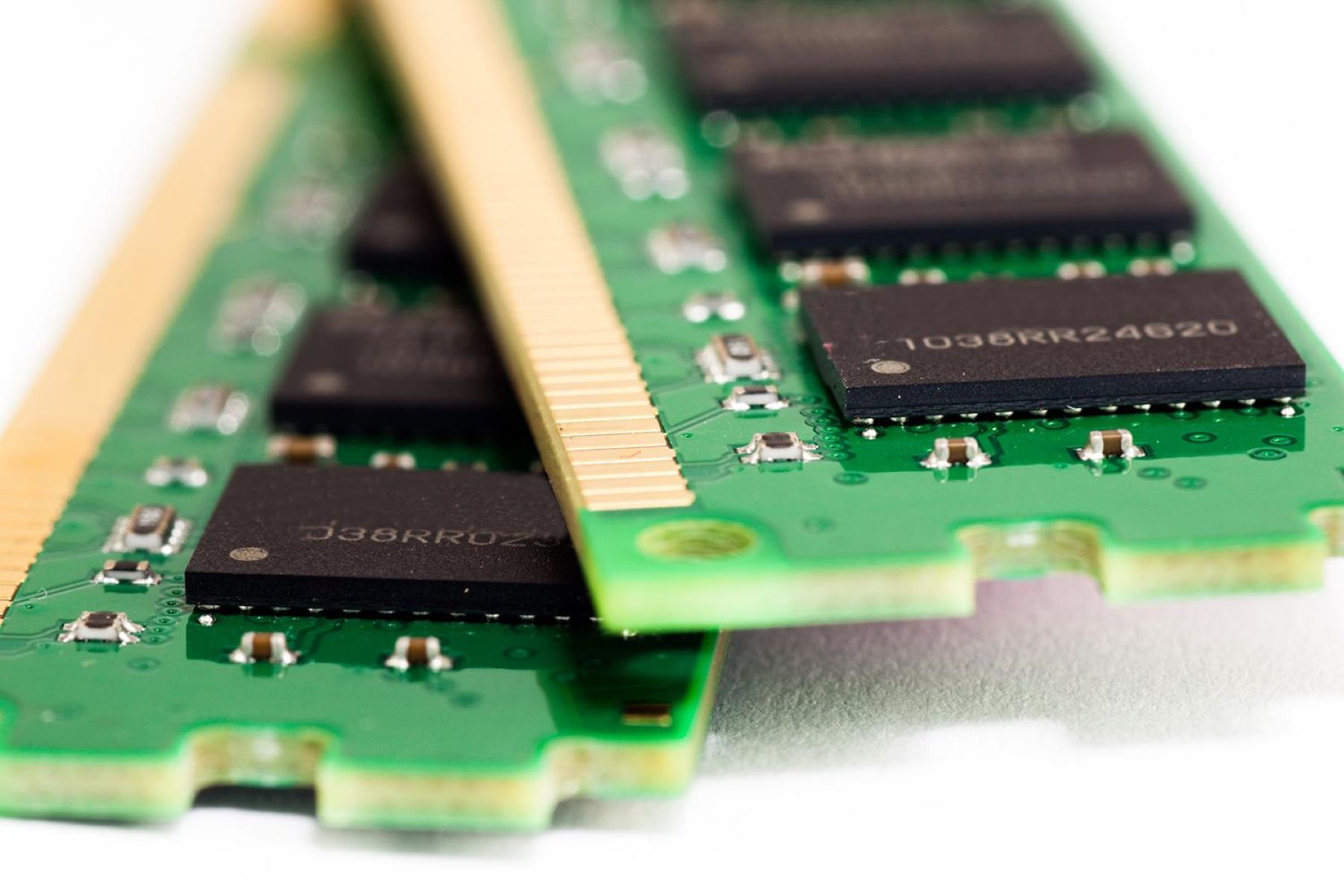Introduction
When it comes to optimizing the performance of your computer, one crucial factor to consider is the amount of random access memory (RAM) available. RAM plays a vital role in ensuring that your computer runs smoothly and efficiently. It acts as a temporary storage space for data that your computer needs to access quickly, such as running applications and open files. However, over time, your RAM can become cluttered with unnecessary data and processes, leading to sluggish performance and decreased productivity.
In this article, we will explore the importance of freeing up RAM on your PC and provide you with practical tips to do so. Whether you’re a Windows, Mac, or Linux user, we’ve got you covered with a range of techniques to optimize your computer’s memory usage. By implementing these strategies, you can regain control over your system’s performance and experience a noticeable improvement in speed and responsiveness.
By freeing up RAM, you allow your computer’s operating system and applications to utilize the available memory more efficiently. This results in faster processing times, smoother multitasking, and reduced instances of system freezes or crashes. Whether you’re a casual user who surfs the web and checks emails or a power user running resource-intensive programs, having sufficient and optimized RAM is essential for a seamless computing experience.
Now that you understand the importance of freeing up RAM on your PC let’s delve deeper into how RAM works and why it’s crucial to manage it effectively. By gaining a better understanding of the technical aspects, you’ll be better equipped to implement the strategies we’ll discuss later on in the article.
How Does RAM Work?
Random Access Memory, commonly referred to as RAM, is a vital component of your computer’s hardware. It acts as a temporary storage medium that allows the operating system and software applications to store and access data quickly. Unlike the long-term storage provided by your hard drive or solid-state drive (SSD), RAM provides incredibly fast access to information, enabling your computer to perform tasks efficiently.
RAM is made up of small memory modules that are connected to the motherboard of your computer. When you turn on your computer, the operating system and essential programs are loaded into the RAM to facilitate their execution. This allows for quick access to the data needed for running applications, storing temporary files, and maintaining the system’s overall performance.
Each unit of data stored in RAM is assigned a unique memory address, which allows the computer to locate and retrieve the information rapidly. These addresses are arranged in a sequential manner, forming a memory map that the CPU uses to read and write data. The size of this memory map determines the RAM capacity and is typically measured in gigabytes (GB).
When a program is running, it continuously requests and stores data in the RAM, allowing for quick retrieval and processing. This is why having an adequate amount of RAM is crucial for multitasking and running resource-intensive applications.
Unlike the data stored on your hard drive, RAM is volatile, meaning that it requires a continuous flow of electricity to maintain its stored information. This is why shutting down or restarting your computer removes all data from the RAM, as the power supply is cut off and the stored information is lost.
Understanding how RAM works is essential because it highlights the importance of managing this resource effectively. When your computer’s RAM is overwhelmed with unnecessary data or programs, it can become slow and unresponsive. The next section will explore why it is crucial to free up RAM to maintain optimal system performance.
Why is it Important to Free Up RAM?
Freeing up RAM on your computer is essential for several reasons. First and foremost, it allows your computer to perform at its best by ensuring that there is sufficient memory available for running applications and processes. When your system is low on RAM, it has to resort to using a portion of the hard drive as virtual memory, which is significantly slower than accessing data from RAM. This can lead to noticeable slowdowns, increased loading times, and overall decreased performance.
Another important reason to free up RAM is to prevent system crashes and freezes. When your computer’s RAM is overwhelmed, it may not be able to handle all the data and processes, causing instability in the system. This can result in frequent crashes, unresponsive applications, and an overall frustrating user experience.
Additionally, freeing up RAM allows for efficient multitasking. If you often find yourself switching between multiple applications or running resource-intensive tasks simultaneously, having sufficient available RAM is crucial. It enables your computer to handle the demands of various processes without slowing down or causing bottlenecks.
By freeing up RAM, you can also improve the lifespan of your computer’s hardware. Operating with low RAM and relying heavily on virtual memory can put additional strain on your hard drive or SSD, as frequent read and write operations are required. This can lead to a decrease in the lifespan of your storage device and potentially result in data loss.
Furthermore, freeing up RAM can help optimize power consumption on laptops and other portable devices. When your computer is running low on memory, it may compensate by increasing the power usage, which can drain your battery more quickly. By managing your RAM usage efficiently, you can extend your device’s battery life and enjoy longer usage times.
Overall, it is important to free up RAM on your computer to maintain optimal system performance, prevent crashes and freezes, enable efficient multitasking, prolong the lifespan of hardware components, and conserve power. In the next sections, we will explore how to check your RAM usage and provide practical methods to free up RAM on different operating systems.
How to Check Your RAM Usage
Before you can effectively free up RAM on your computer, it is essential to know how much RAM is currently being utilized. Fortunately, checking your RAM usage is a straightforward process, regardless of the operating system you are using.
Windows: In Windows, you can check your RAM usage using the built-in Task Manager. To access Task Manager, simply right-click on the taskbar and select “Task Manager” from the menu that appears. Once Task Manager opens, click on the “Performance” tab, and you will find the amount of RAM being used under the “Memory” section. It will display both the total amount of RAM installed in your system and the amount currently in use.
Mac: Mac users can check their RAM usage using the Activity Monitor. To access the Activity Monitor, go to the “Applications” folder, then open the “Utilities” folder, and select “Activity Monitor.” Once the Activity Monitor is open, click on the “Memory” tab at the top, and you will see the RAM usage information. It will show the total memory, wired memory, active memory, inactive memory, and free memory.
Linux: Linux users have several tools available to check their RAM usage. One popular option is the “free” command, which can be executed in the terminal. Open the terminal and type “free” followed by the “-h” option to display the memory usage in a human-readable format. The output will show the total, used, free, and shared memory, giving you a comprehensive view of your RAM utilization.
By regularly checking your RAM usage, you can monitor how much memory is being utilized and identify if there is a need to free up RAM. This will help you determine the effectiveness of the strategies we will discuss in the upcoming sections. Now that you have an understanding of how to check your RAM usage, let’s move on to the various methods you can use to free up RAM on your specific operating system.
Ways to Free Up RAM on Windows
Windows users have several methods available to free up RAM and optimize their computer’s performance. Here are some effective strategies to consider:
- Close unnecessary programs and processes: When you have too many applications running in the background, they consume valuable system resources, including RAM. Close any unnecessary programs or processes using the Task Manager by right-clicking on them and selecting “End Task”.
- Disable startup programs: Some programs automatically launch at startup, using up valuable RAM. To disable these programs, open the Task Manager, go to the “Startup” tab, and disable any applications that you don’t need to start automatically with Windows.
- Clear standby memory: Windows has a feature called “standby memory” that allows it to cache recently used files for faster access. However, this can also consume a significant amount of RAM. To clear the standby memory, you can use third-party tools like RAMMap or Empty Standby List. These tools release the cached memory and free up RAM for other processes.
- Adjust visual effects: Windows includes various visual effects and animations that can be visually appealing but also consume system resources. To reduce the strain on your RAM, go to the “System Properties” settings, select the “Advanced” tab, and click on the “Settings” button under the “Performance” section. From there, choose the option to adjust for best performance or manually disable specific visual effects.
- Disable unnecessary services: Windows runs various background services that can occupy significant amounts of memory. To disable unnecessary services, open the Run dialog (Windows key + R), type “services.msc”, and press Enter. Locate services that you don’t need and set their startup type to “Disabled” or “Manual”. However, exercise caution when disabling services, as some may be essential for the proper functioning of your system.
- Increase virtual memory: By increasing the size of your virtual memory (paging file), you can alleviate the burden on RAM. To do this, go to the “System Properties”, select the “Advanced” tab, click on the “Settings” button under the “Performance” section, navigate to the “Advanced” tab in the new window, and click on the “Change” button under the “Virtual Memory” section. Adjust the size of the paging file as needed.
These are just a few ways to free up RAM on a Windows computer. Implementing these strategies can help optimize your system’s performance and ensure that your RAM is utilized efficiently. Combine multiple methods for the best results. Now, let’s move on to ways you can free up RAM on a Mac system.
Ways to Free Up RAM on Mac
If you’re a Mac user looking to free up RAM and improve your computer’s performance, here are some effective strategies to consider:
- Quit unused applications: Unused applications that are running in the background use up valuable system resources, including RAM. Quitting these applications can free up memory and improve performance. You can use the Command + Q shortcut or go to the application menu and select “Quit” to close applications.
- Monitor and close resource-intensive processes: Some processes or applications may consume a significant amount of RAM. Monitor your system’s activity using the Activity Monitor tool and identify resource-intensive processes. If you notice a particular application is using excessive memory, consider closing it or finding alternatives with lower resource requirements.
- Disable unnecessary login items: Login items are applications that launch automatically when you start up your Mac. These items can consume RAM and slow down your system. To disable unnecessary login items, go to System Preferences, select “Users & Groups”, click on your user account, navigate to the “Login Items” tab, and remove or disable any applications that you don’t need to launch at startup.
- Clear cache and temporary files: Temporary files and cache can accumulate over time, occupying precious disk space and using up RAM. Clean out these files using built-in system tools or third-party cleaning applications. You can use the “Optimize Storage” feature in the Storage tab of the “About This Mac” window or use third-party cleaning software like CleanMyMac or Onyx.
- Manage memory-hungry browser extensions: Browser extensions can consume a significant amount of memory, especially if you have multiple extensions installed. Review your browser’s extensions and disable or remove any that you don’t need. Additionally, consider using a lightweight browser or limiting the number of tabs open simultaneously to reduce memory usage.
- Restart your Mac regularly: Restarting your Mac can help free up RAM by closing all background processes and clearing cached data. Regular restarts can improve system performance and ensure that resources are fully utilized.
By implementing these strategies, you can effectively free up RAM and optimize the performance of your Mac. Experiment with different methods and combination to find what works best for your specific system. Now, let’s move on to ways you can free up RAM on a Linux system.
Ways to Free Up RAM on Linux
If you are using a Linux system and want to free up RAM to optimize performance, here are some effective methods to consider:
- Terminate unnecessary processes: Identify and terminate any unnecessary processes running on your Linux system. You can use the System Monitor or “top” command in the terminal to monitor and kill processes that are consuming a significant amount of RAM.
- Remove unnecessary software: Uninstall any applications or packages that you no longer need, as they may be taking up valuable RAM. You can use package managers such as apt or yum to remove software from your Linux distribution.
- Manage background services: Linux distributions often have several background services running by default. Review these services and disable any that are not essential for your system’s operation. You can use the “systemctl” command or the services management interface provided by your distribution.
- Adjust swappiness: Swappiness is a Linux kernel parameter that determines the tendency to swap data from RAM to the swap space. By adjusting the swappiness value, you can control how aggressively your system swaps data. Lowering the swappiness value can help reduce unnecessary swapping and preserve valuable RAM. You can modify the swappiness value in the “/etc/sysctl.conf” file or use the “sysctl” command to change it temporarily.
- Clear cache and buffers: Linux caches and buffers frequently accessed data in RAM to improve performance. However, this can occupy a significant amount of memory. You can clear the cache and buffers using the “sync” command followed by the “echo 3 > /proc/sys/vm/drop_caches” command. Keep in mind that clearing the cache may affect system performance temporarily until it rebuilds.
- Allocate more swap space: Increasing the swap space can provide additional virtual memory to relieve the pressure on RAM. You can allocate more swap space by creating additional swap partitions or using swap files. Once created, you need to activate the swap space using the “swapon” command.
These methods, when implemented with caution, can help free up RAM on your Linux system and improve performance. Keep in mind that excessive termination of processes or aggressive adjustment of system parameters may cause instability. Experiment with different techniques and monitor the impact on your system to find the right balance for optimal performance. With these strategies, you can unleash the full potential of your Linux system. In the next section, we will share some tips to prevent high RAM usage and maintain optimal performance.
Tips to Prevent High RAM Usage
Preventing high RAM usage is crucial to maintain optimal system performance. By implementing the following tips, you can effectively manage your RAM usage and ensure that your computer runs smoothly:
- Close idle applications: Periodically check your running applications and close any that are not actively being used. This helps prevent unnecessary consumption of RAM resources and ensures that your computer has sufficient memory for essential tasks.
- Limit startup programs: Reduce the number of applications that launch automatically when you start your computer. Having fewer programs running in the background from the get-go helps conserve RAM and speeds up the booting process.
- Optimize browser usage: Web browsers are often memory-intensive. To prevent excessive RAM usage while browsing, limit the number of open tabs, regularly clear browsing history and cache, and disable unnecessary extensions or plugins.
- Monitor resource usage: Keeping an eye on system resource usage can help identify programs or processes that hog RAM. Use task manager or resource monitor tools to analyze resource consumption and take necessary actions, such as closing resource-heavy applications or terminating unnecessary processes.
- Reduce visual effects: Operating systems often include visual effects that enhance the user interface but consume additional system resources, including RAM. Consider disabling or minimizing these effects to free up memory and improve overall performance.
- Upgrade RAM: If you find yourself frequently running out of memory even after optimizing your usage, consider upgrading your RAM. Increasing your computer’s RAM capacity provides more headroom for applications and processes, resulting in smoother multitasking and improved performance.
- Keep your system updated: Regularly install updates for your operating system and applications. Updates often include performance improvements and bug fixes that can help optimize RAM usage and enhance overall system performance.
- Perform regular system maintenance: Regularly perform system maintenance tasks such as disk cleaning, defragmentation, and disk error checking. These routine maintenance activities help keep your system optimized, prevent clutter, and improve RAM efficiency.
By implementing these tips, you can prevent high RAM usage and ensure that your computer operates at its best. Remember that optimizing RAM usage is an ongoing process, and periodically reviewing your system’s performance and adjusting your strategies will help maintain optimal efficiency. Now that we have explored various methods, it’s time to wrap up this article.
Conclusion
Optimizing RAM usage is essential for maintaining optimal system performance and ensuring smooth operation of your computer. Whether you are using Windows, Mac, or Linux, there are various methods available to free up RAM and improve overall efficiency.
By closing unnecessary applications and processes, managing startup programs, adjusting system settings, clearing cache and temporary files, and monitoring resource usage, you can effectively free up RAM and prevent high usage. Additionally, upgrading your RAM capacity and keeping your system updated can further enhance performance and responsiveness.
Regularly checking your RAM usage and implementing the strategies outlined in this article will help you make the most of your computer’s resources and ensure an efficient computing experience. Remember to strike a balance between optimizing RAM usage and keeping essential programs and processes running smoothly to avoid any negative impacts on functionality.
It is important to note that the specific methods and techniques mentioned in this article may vary depending on the operating system and hardware configuration of your computer. Therefore, it is recommended to adapt the strategies to suit your specific system requirements.
By following these guidelines and maintaining a proactive approach to RAM management, you can enjoy improved system performance, faster multitasking, and a more enjoyable computing experience. Take control of your RAM usage and unleash the full potential of your computer!









